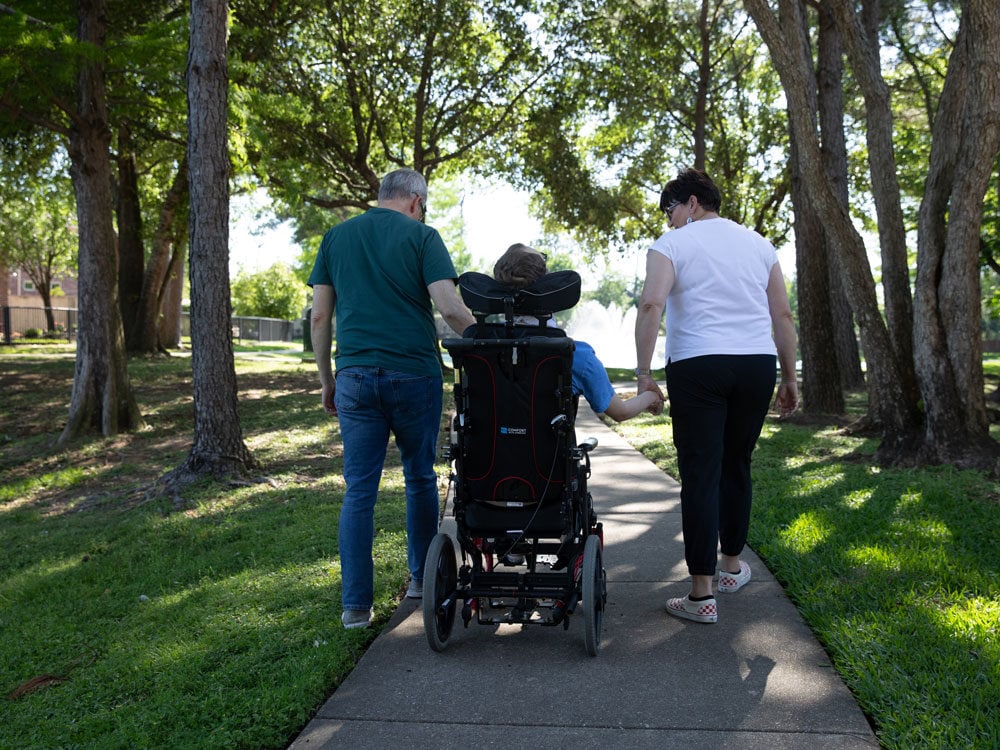Looking for more information on seating and positioning? Check out Permobil seating and positioning page here.
Wheelchair positioning accessories are not just optional add-ons; they are medically necessary components of an effective seating and positioning solution. By providing essential support, preventing health complications, and enhancing comfort and mobility, these accessories contribute significantly to the quality of life for wheelchair users.
Ensuring that your seating solution includes the appropriate positioning accessories is a critical step in promoting health, independence, and well-being. Let’s take a closer look at what positioning supports are available and some of the resources we have made available to assist with clinical justification.
Head supports

Often referred to as a ‘head rest’, head supports attach to the back support of a wheelchair seating system and provide a place for your head and neck to be positioned. Whether you’re tilting back for a pressure relief or need the support all of the time due to muscle weakness, they are adjustable, come in different sizes and materials and have different fabric covers available. Check out Justification for Head Supports to learn how you may qualify for this as a medical necessity!
Lateral thoracic or trunk supports

Using lateral trunk supports that are attached to a back support in a wheelchair provide crucial benefits by enhancing stability and promoting proper posture. These supports can help maintain an upright position, reduce the risk of leaning or slumping which can lead to discomfort and long-term musculoskeletal issues. Additionally, they can help improve balance and control, enabling more effective and confident mobility. If you’d like to learn more about Clinical Applications and Justification for Lateral Trunk Supports, head over to that blog.
Hip or pelvis and thigh supports

Hip or pelvic positioning supports help to maintain the pelvis in a neutral position, enhance posture, can assist in preventing slumping or sliding forward on the seat cushion, and can even be part of reducing the risk of pressure injuries. Lateral thigh guides can keep the legs in the most optimal position, preventing them from splaying outward and also reducing pressure on the hips. Clinical Applications and Justification for Lateral Upper Leg (Thigh) Supports is a great read for more information!
Upper extremity and lower extremity positioning supports
Upper extremity (UE) supports are accessories that can be added onto the existing arm rest of the wheelchair and can add length or additional postural support, decrease contracture risk or swelling/edema, stabilize the upper extremity due to weakness and even increase comfort for the user. Lower extremity (LE) supports are accessories that can be added to the lower portion of a wheelchair to support the lower leg, foot, and ankle in the most optimal position. These options can also assist with decreasing the risk of contractures or accommodate existing contractures, protect the lower extremity from potential injury, help manage abnormal tone and reflexes, support a residual or post-surgical limb. Head over to Taking a Closer Look at Wheelchair Accessories to see even more examples.
As I mentioned, different fabric covering materials are available to be used with these accessories. Permobil is the exclusive distributor of GlideWear™ shear reduction fabric, an embedded material to the Stretch-Air and Comfort-Tek cover options for Comfort wheelchair accessories including head supports, lateral trunk support and thigh support. GlideWear™ is lightweight, breathable, and reduces moisture buildup for micro-climate control to protect the skin. By reducing the amount of friction, it reduces the daily stresses on soft tissue and the probability of skin breakdown from the effects of shear. Learn more about The Importance of Shear Reduction in Wheelchair Supports.
You may need only one of these supports – a combination of them – or all of them! Your specific individual needs can be met when you know what is available to you. We recommend working with your clinician and equipment team to assess, try if available, and then most importantly - fit these components to you once you receive them.
 Nicole LaBerge, PT, ATP
Nicole LaBerge, PT, ATPCommercial Product Manager - Permobil Americas
Nicole B. LaBerge, PT, ATP is a Physical Therapist with 18 years of experience in a variety of clinical settings. She currently works for Permobil as a Commercial Product Manager of Seating and Positioning products. Her past clinical practice has included seating and mobility for adult and pediatric populations, with a focus in neurological rehabilitation, power standing and wound care. Nicole has presented at the State and International Levels, has multiple publications in peer reviewed journals and enjoys sharing her passion for patient advocacy, efficiency, and clinical outcomes. She served as an Executive Board Member for the Clinician Task Force for 3 years and is currently an active member in the CTF.
